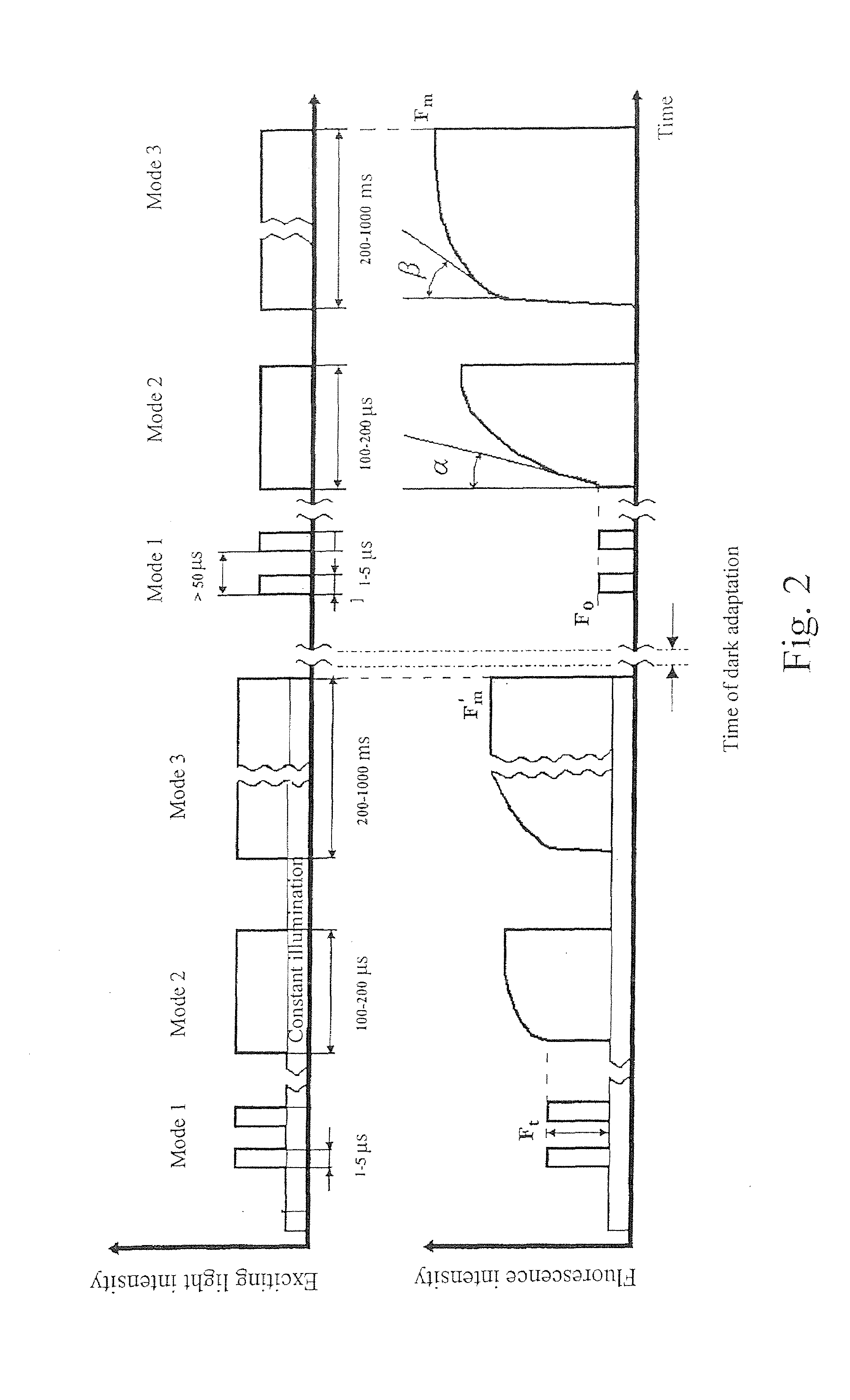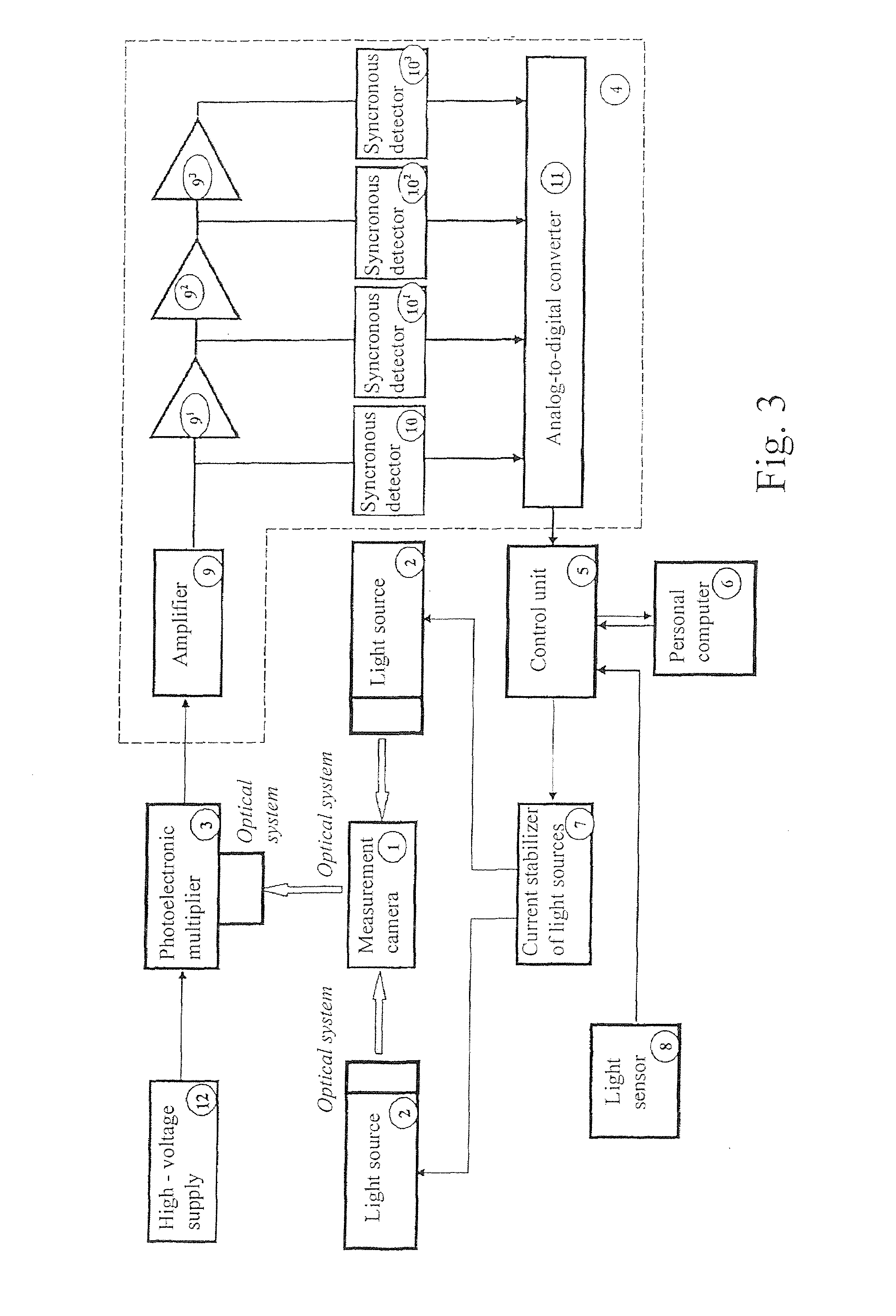Method for fluorometrically determining photosynthesis parameters of photoautotropic organisms, device for carrying out said method and a measurement chamber
a technology of photoautotropic organisms and fluorometric evaluation, which is applied in the field of biological instruments, can solve the problems of not being able to uniquely interpret, reducing fluorescence efficiency, and determining the value f/sub>o, and achieves the effect of increasing the objectivity and accuracy of fluorometric evaluation and high time resolution
- Summary
- Abstract
- Description
- Claims
- Application Information
AI Technical Summary
Benefits of technology
Problems solved by technology
Method used
Image
Examples
Embodiment Construction
[0072]On exposure of the sample to a long light pulse a subsequent actuation of photosynthesis reactions takes place with different executing rates and different products of these reactions (FIG. 1). With that, the chlorophyll fluorescence yield provided by executing these reactions change.
[0073]According to the present invention, the sample under study is exposed to pulses of different duration, each of which corresponds to the electron transfer time at a definite stage in the electron-transfer photosynthesis chain resulting in respond fluorescence with parameters characterizing the reactions executing at this particular stage of photosynthesis. So, the characteristic time of one of the first reactions—reducing Qa is about 100 μs, thus, at the duration of a pulse greatly less than 100 μs the actuation of photosynthesis reactions does not practically occur, and that is why under feeding a light pulse of 1-5 μs the level of fluorescence corresponds to the initial level of chlorophyll...
PUM
 Login to View More
Login to View More Abstract
Description
Claims
Application Information
 Login to View More
Login to View More - R&D
- Intellectual Property
- Life Sciences
- Materials
- Tech Scout
- Unparalleled Data Quality
- Higher Quality Content
- 60% Fewer Hallucinations
Browse by: Latest US Patents, China's latest patents, Technical Efficacy Thesaurus, Application Domain, Technology Topic, Popular Technical Reports.
© 2025 PatSnap. All rights reserved.Legal|Privacy policy|Modern Slavery Act Transparency Statement|Sitemap|About US| Contact US: help@patsnap.com



